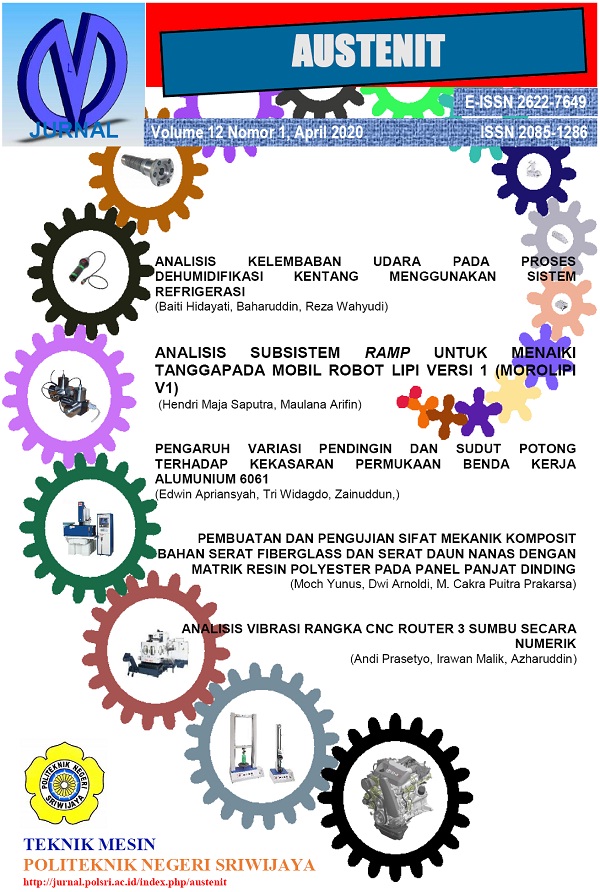AIR MOISTURE ANALYSIS OF POTATO DEHUMIDIFICATION PROCESS USING THE REFRIGERATION SYSTEM
Abstract
The refrigeration system is one of the technologies used to condition thetemperature of the air either by heating or cooling, in general refrigeration iscommonly used for human comfort needs and also for the freezing process. Inthis research, refrigeration is used for the process of drying potatoes using adehumidification method, which is the reduction of moisture in the air vapor.Potatoes will be cooled using a refrigeration process and then will be heatedusing a heater, data collection is carried out at a temperature of 600C heater, withdata collection each of 60 minutes, 120 minutes and 180 minutes. From theresults obtained, the dehumidifier method using a refrigeration system can drypotatoes to shrink 60% and humidity can be reduced to 83.3%.Downloads
References
2. Lowrey, S., Carrington, G., Sun, Z. 2014. “Adapting a geared domestic refrigerative dehumidifier for low-temperature operationâ€. International Journal of Refrigeration: 41(2014) 137-146.
3. Ma’rufatin. Anies, 2011, “Respon pertumbuhan Tanaman Kentang Varietas Atlantis dan Super John Dalam Sistem Aeroponik Terhadap Periode Pencahayaanâ€, Bogor: Institut Pertanian Bogor.
4. Parman.Sarjana, 2007, “Pengaruh pemberian pupuk organikcair terhadap pertumbuhan dan produksi kentang (Solanum Tuberosum L)â€, Buletin Anatomi dan Visiologi Vol.XV,No.2
5. Whitman et al. 2009. “Refrigeration & Air Conditioning Technology 6th Editionâ€. Delmar: Cengge Leaning
6. Whitman et al. 2013. “Refrigeration & Air Conditioning Technology 7th Editionâ€. Delmar: Cengge Leaning
7. Widodo, Sapto et al. 2008. “Sistem Refrigerasi dan Tata udaraâ€. Departemen Pendidikan Nasional
Downloads
Published
How to Cite
Issue
Section
License
The Authors submitting a manuscript do so on the understanding that if accepted for publication, Authors retain copyright and grant the AUSTENIT right of first publication with the work simultaneously licensed under a Creative Commons Attribution-ShareAlike License that allows others to share the work with an acknowledgment of the work's authorship and initial publication in this journal.
AUSTENIT, the Editors and the Advisory International Editorial Board make every effort to ensure that no wrong or misleading data, opinions or statements be published in the journal. In any way, the contents of the articles and advertisements published in AUSTENIT are the sole responsibility of their respective authors and advertisers.















